I love rhubarb. I love its flavour and I love how easy it is to grow. I always recommend planting rhubarb before anything else if you plan to grow your own food for these reasons. As a perennial edible, it will keep coming back better than ever year after year, it is fantastic value for money.
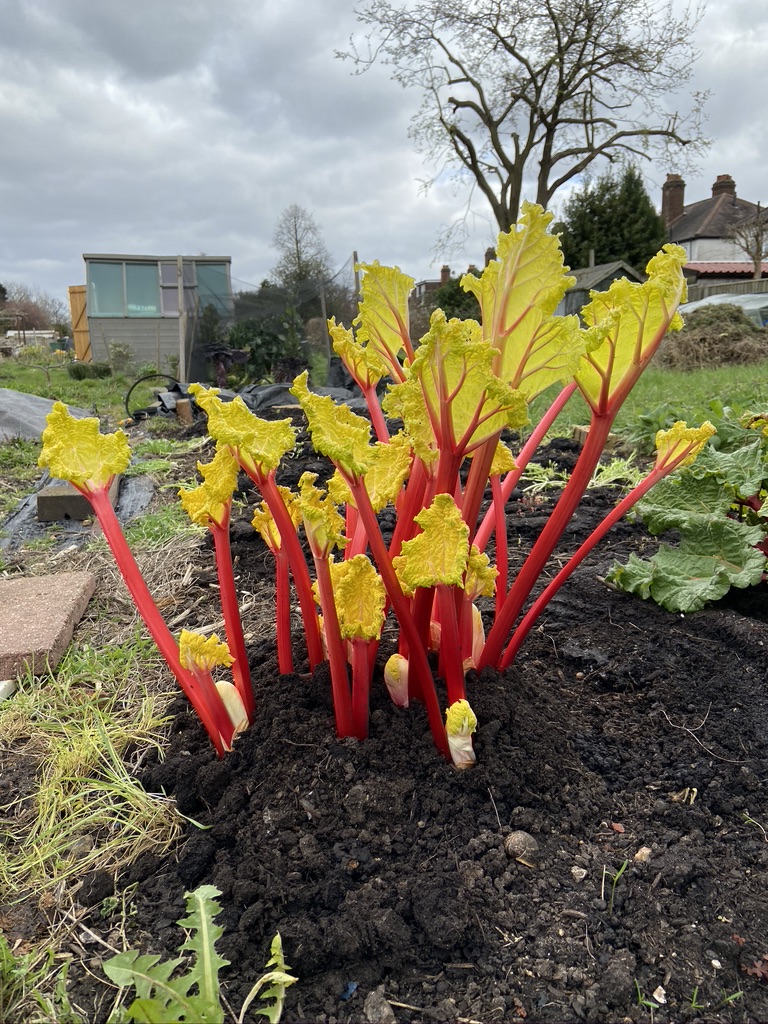

In this guide I will talk a little about how to grow rhubarb well and also what you can then do with it!
Best cultivars of rhubarb to grow
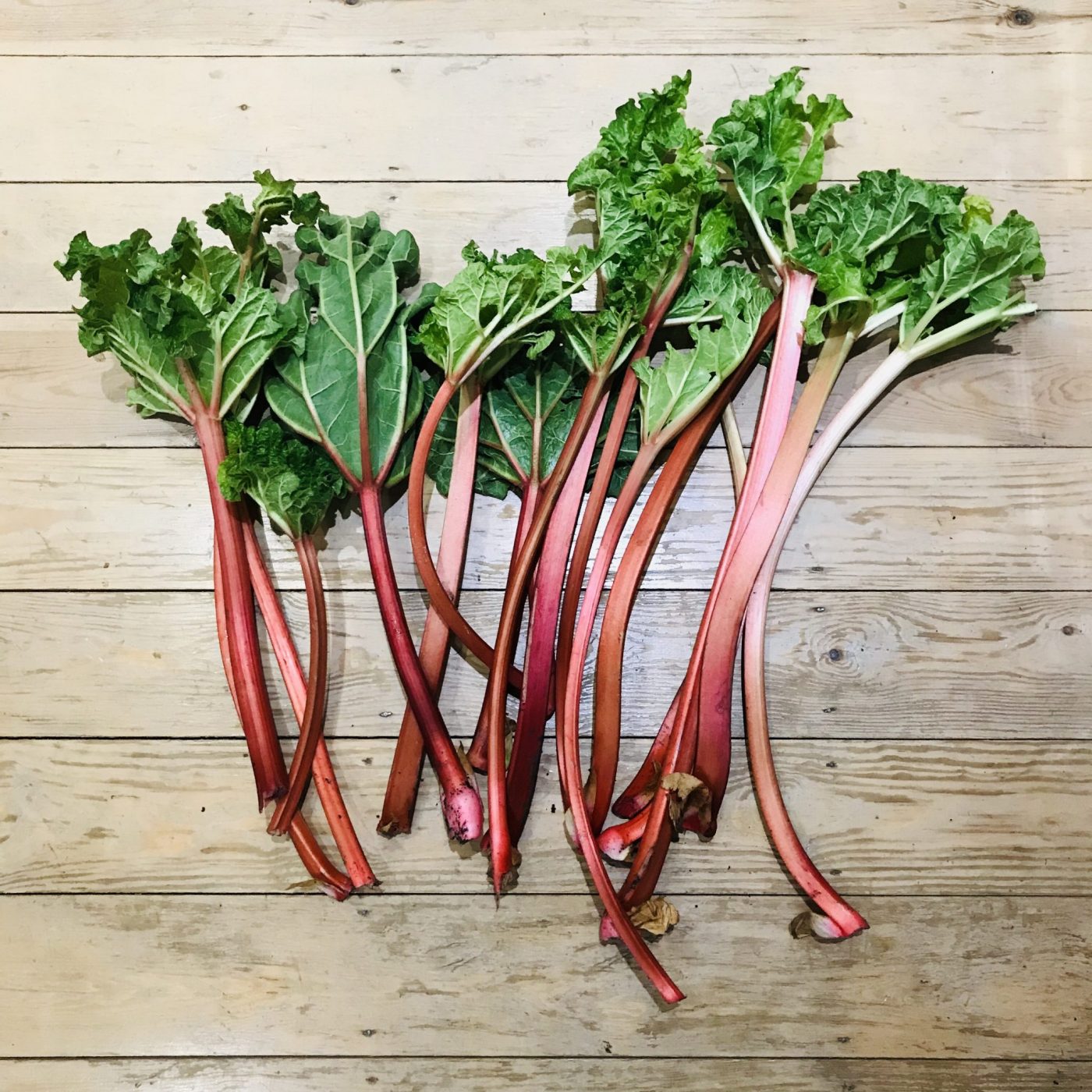
The rhubarb I grow was already on my allotment when I took it on from the previous owner. I dug up, divided and moved the crowns which will have given them another lease of life. Five years on they’re stronger and tastier than ever but I have no idea what variety they are!
There is a large number of cultivars of rhubarb on the market and as with any food, taste is in the mouth of the eater. My recommendation then is to try before you buy if you can. Easiest way to do this is look at the cultivar names on the sticks you buy in shops. However, you might want to consider growing something different to what is widely sold, something more unique.
You could try and hunt these out to taste but I would suggest simply buying 3 – 4 varieties to grow yourself and then taste test them. Try each one, after waiting a year for them to settle down. If you like them all, perfect. If there are some you’re less keen on, compost them! Don’t give them away because who wants a less tasty rhubarb anyway? It’s not a waste of money as you can then divide the plant of the cultivar you do like into more plants. Giving you the perfect rhubarb patch tailored to your taste.
That said, to get you started, some rhubarbs to try I’ve listed below and there are many more:
- ‘Apple Delight’
- ‘Glaskin’s Perpetual’
- ‘Livingstone’ – has a second wave in autumn when you can pick again.
- ‘Prince Albert’
- ‘Victoria’ – my guess is that this is the cultivar on my plot because it’s so common. It also crops later through summer, as mine does. Making it a good one if you love rhubarb so much you’d like to eat it for most of the year.
Planting rhubarb
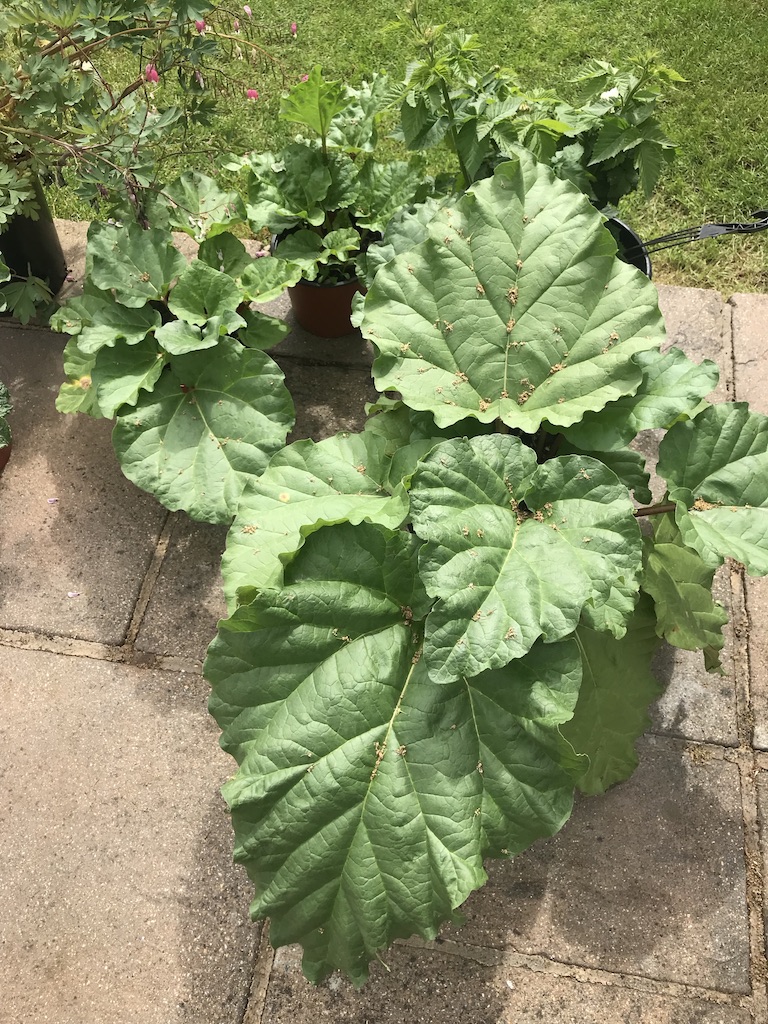
Planting rhubarb is pretty straightfoward, there are a few key rules to remember:
- Keep the bit where the leaves grow (called the crown) just above the soil level, covering the roots below.
- Allow a metre of space per plant as they are big!
- Plant in soil that remains constantly damp all year round but doesn’t sit in soggy water all winter – rhubarb likes moist but free draining soil. In winter too much water in the cold can cause them to rot, though I’ve never had that happen.
- The best spot for rhubarb is in full sun but it can take some shade too – about 6 – 10 hours of direct sun or more is best.
- Add a bucket or two of compost of well-rotted manure into or around where you are planting to add lots of nutrients.
How many rhubarb plants to grow?
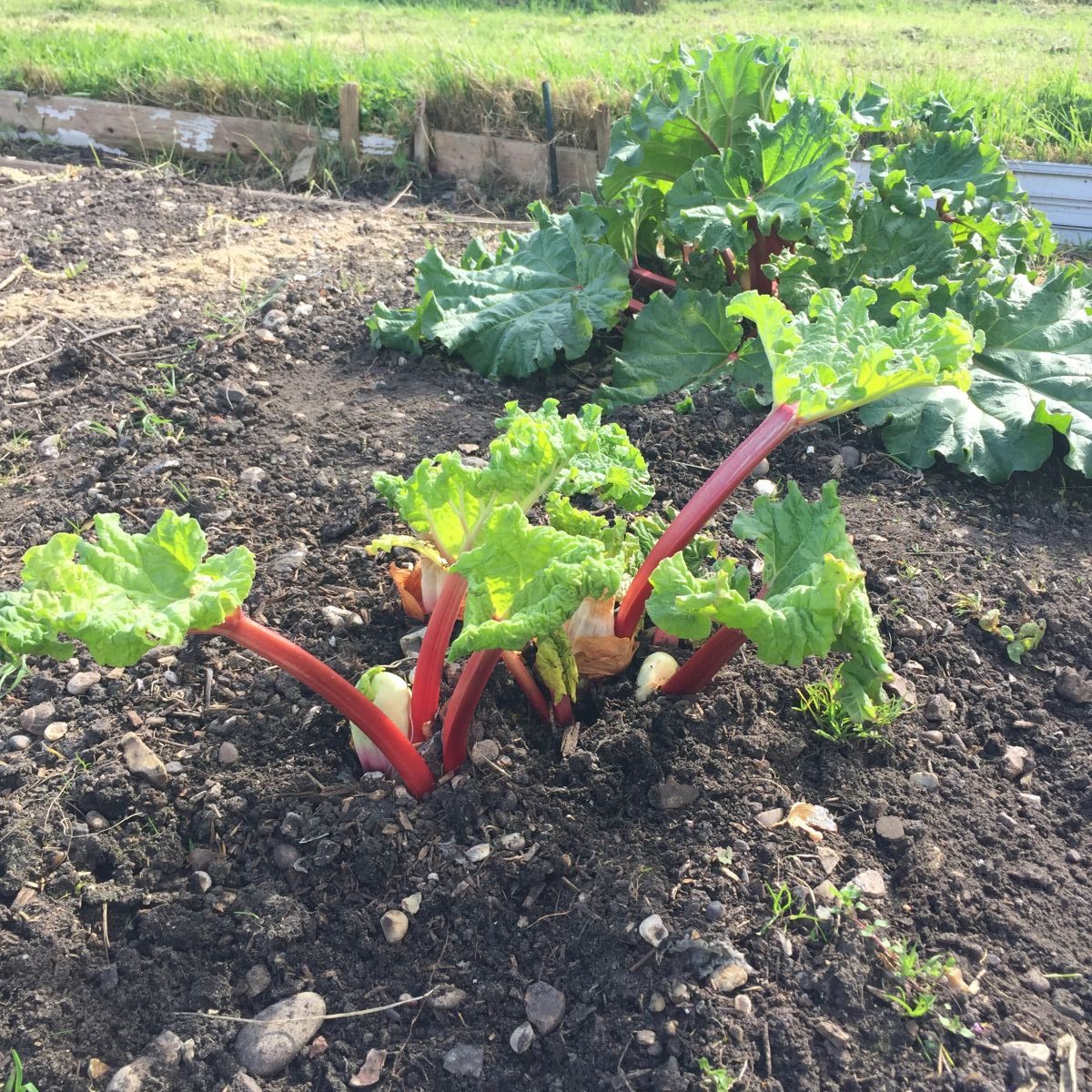
I grow two plants next to each other and that is enough to spoil myself and my partner Chris with rhubarb desserts for a significant chunk of spring, early summer and a little beyond. Any more and we’d be fed up of it. For a small family, perhaps 3 – 4 plants to be on the safe side.
Caring for rhubarb
If you got the planting right, then growing rhubarb is easy as rhubarb crumble. Make sure they don’t dry out during hot spells in summer, watering heavily each week if they do dry out. Add a mulch of compost of well-rotted manure around the plant each spring too, to add more nutrients. In autumn the leaves will die back and you just need to remove these and compost them – although I’ve forgotten to do this in some years and it hasn’t affected them.
Remove the flowers
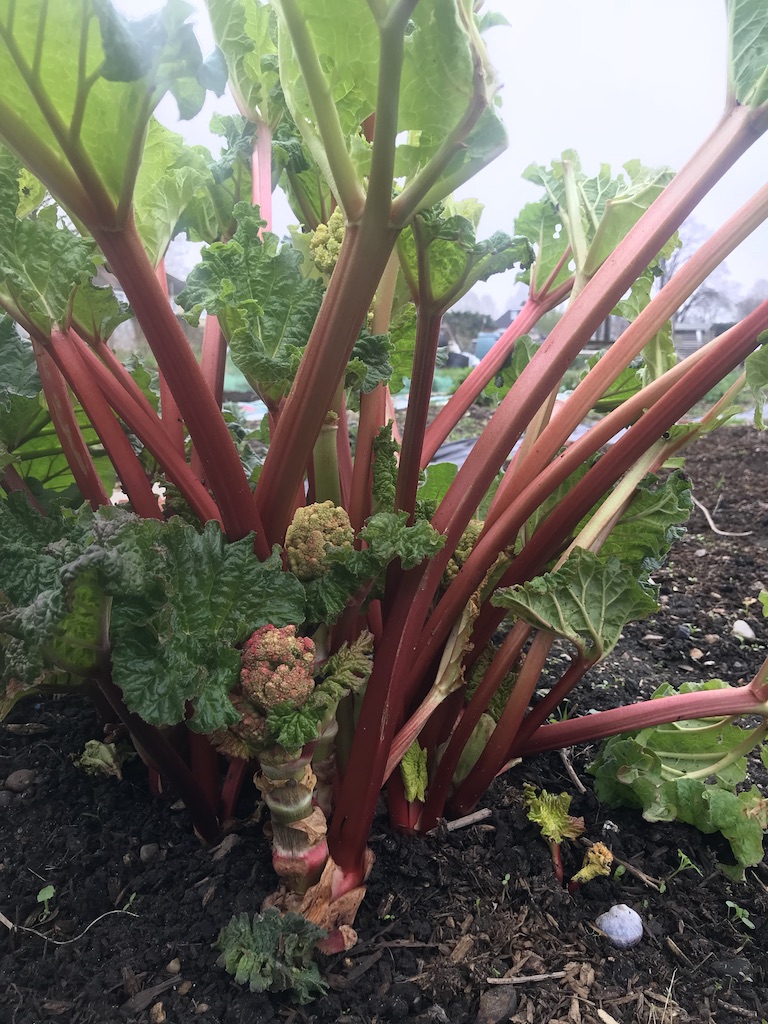
One top tip is to cut or snap off the flower stems before the flower. You’ll see them emerge in spring as big red clusters of flower buds, like a weird looking cauliflower. Cut the stems at about half way up as soon as you see them. You could cut lower but often I find they have leaves growing on them which can contribute to the plant growing. Though it doesn’t really matter either way. If you don’t cut off the flowers the plant will pour energy into the big plumes of creamy flowers (which look quite pretty) and stem and leaf production will be lower.
Forcing rhubarb
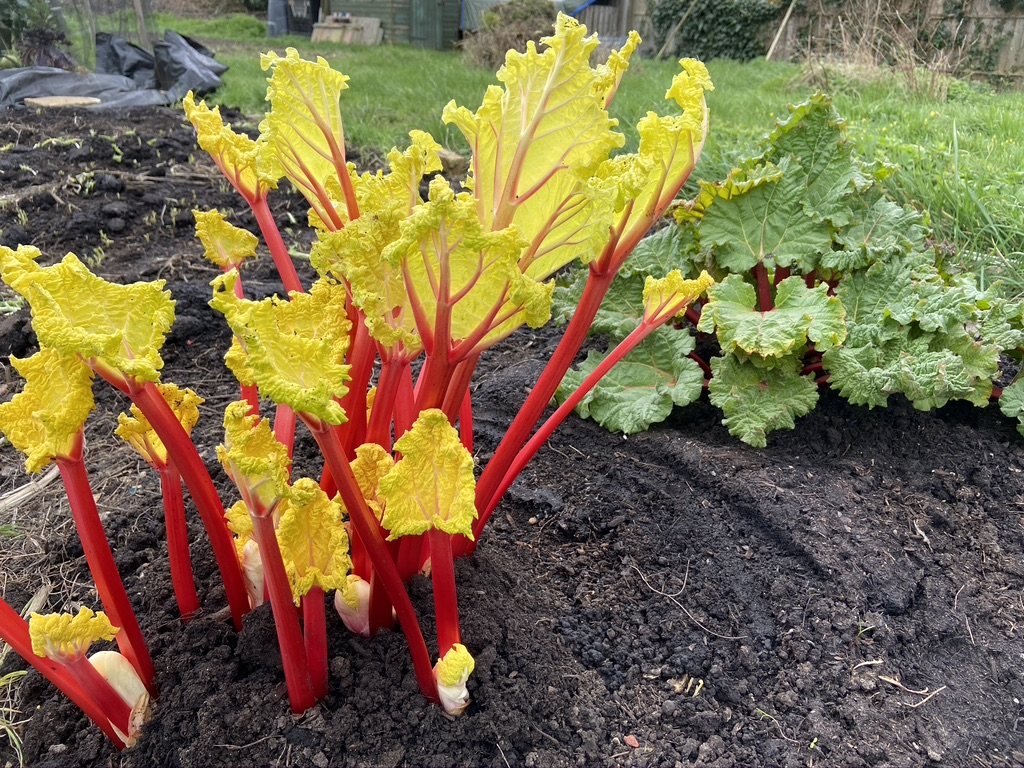
Forcing is one of those technical gardening jargon words that describes what is actually an incredibly simple process. The idea of forcing is to put a raised cover such as a bin, deep bucket or designed forcing pot over the plant in late winter (January or February). What this does is trick the plant into thinking the ground level is actually about 50 – 60cm higher, ‘forcing’ the stems to grow taller as they stretch for sunlight.
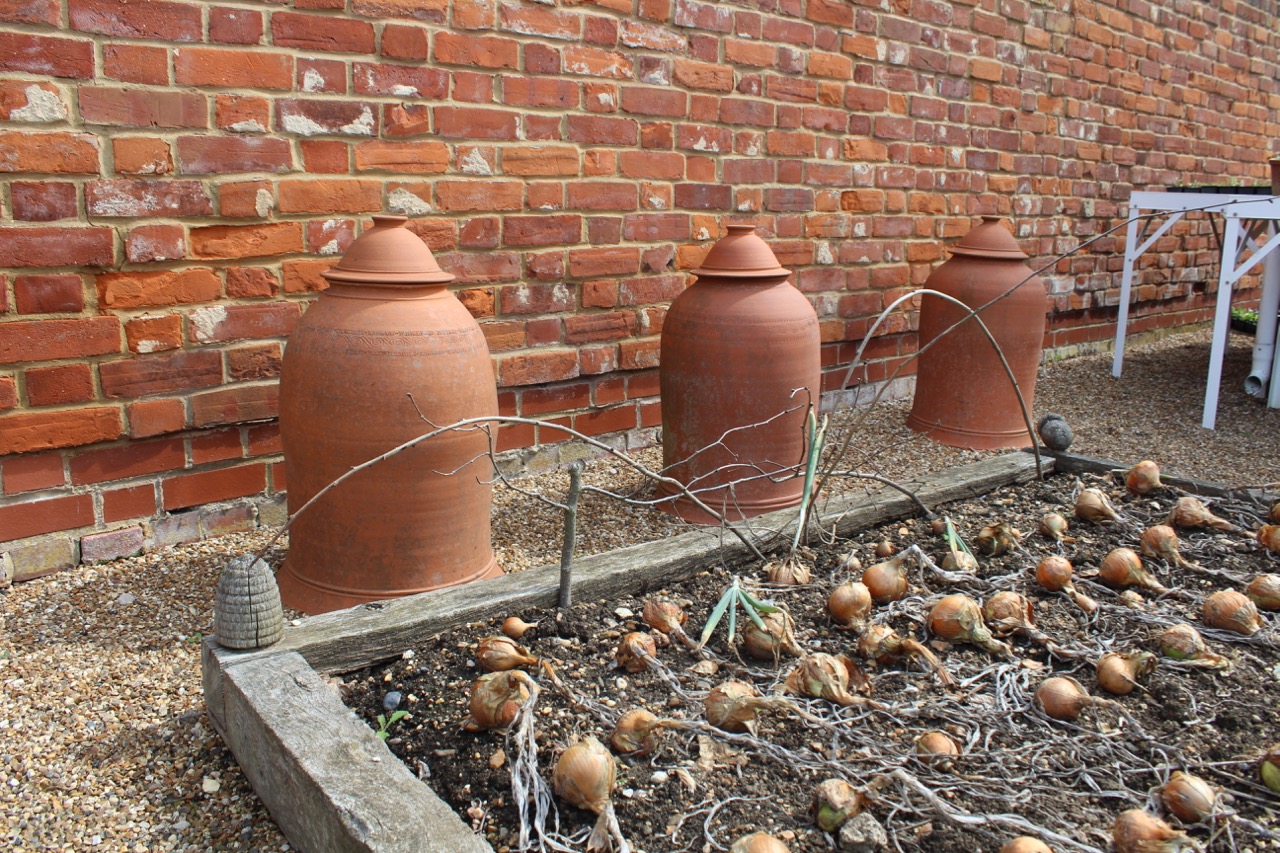
People do this because it encourages earlier stem production on that plant and it changes the flavour slightly, making it a little stronger in taste to me. It also removes all green from the stem because you are hiding the stems from sunlight, so they turn a solid, vibrant ruby red which looks pretty. The bucket or whatever you use mustn’t let any light in at all, so cover holes. A brick or heavy stone on a plastic or light covering will stop it from blowing away too.
Important to note is that forcing uses up a lot of the plant’s energy so you should only do this for a month or so of pickings before giving the plant a break, removing the cover for the rest of the year. Alternating the plants you force is important to, forcing one year and then giving the plant a year off the following year. For this reason it is best to grow more than one rhubarb plant so you can alternative forcing between two or more. You can never have too much rhubarb!
Harvesting rhubarb: trick to pick
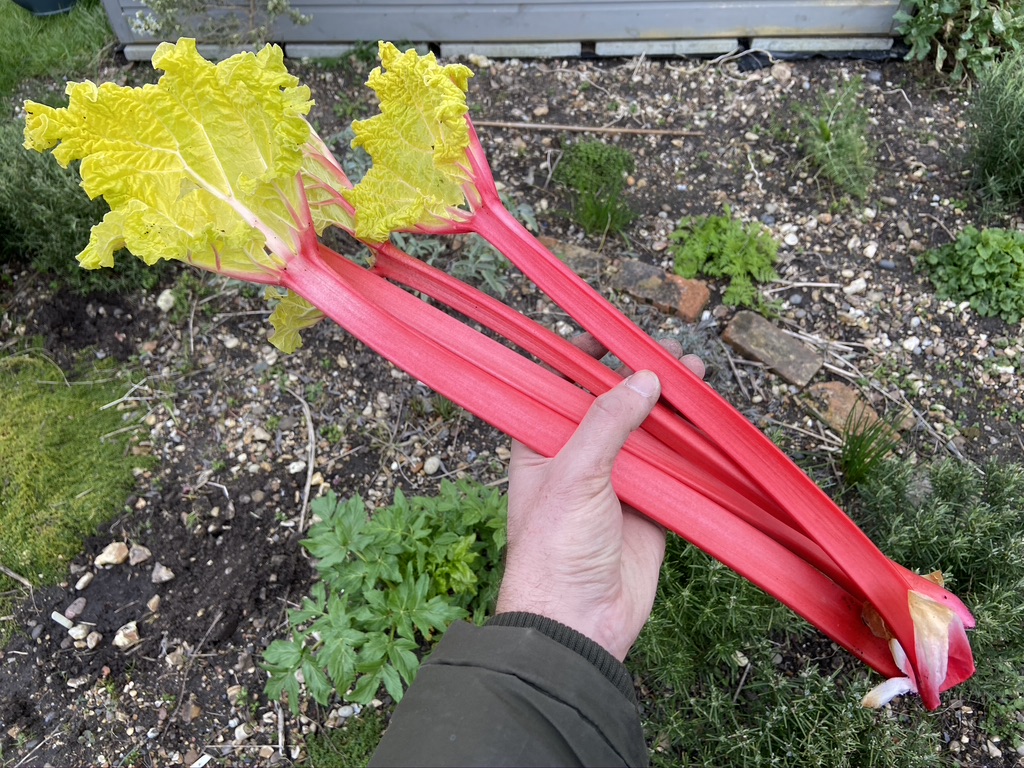
Pulling the leaves out or cutting them, may seem like the obvious way to pick a rhubarb leaf but there is a special trick to doing it right. If you pull or cut, you leave the base of the stem which is a) a waste and b) can lead to rotting that can harm the plant. Instead, what you need to do is grip the stem near the base and then slide and twist it out until it snaps clean off.
How long can you pick rhubarb for?
On the plants that haven’t been forced, you can pick constantly throughout the growing season but don’t go too wild. Only pick about a quarter of stems from each plant at any one time. Ensure the plants have a good number of leaves so they can still produce enough energy to grow well. If you notice they are slowing down, it’s best to stop picking for a while until they’re noticeably vigorous again.
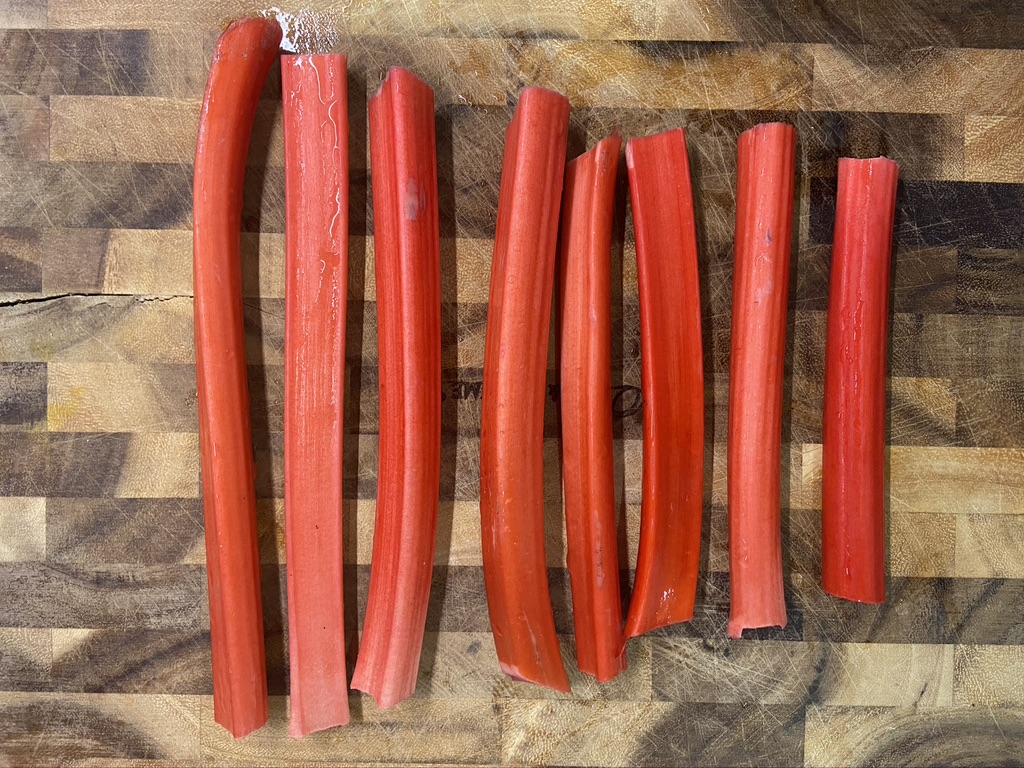
How to cook rhubarb
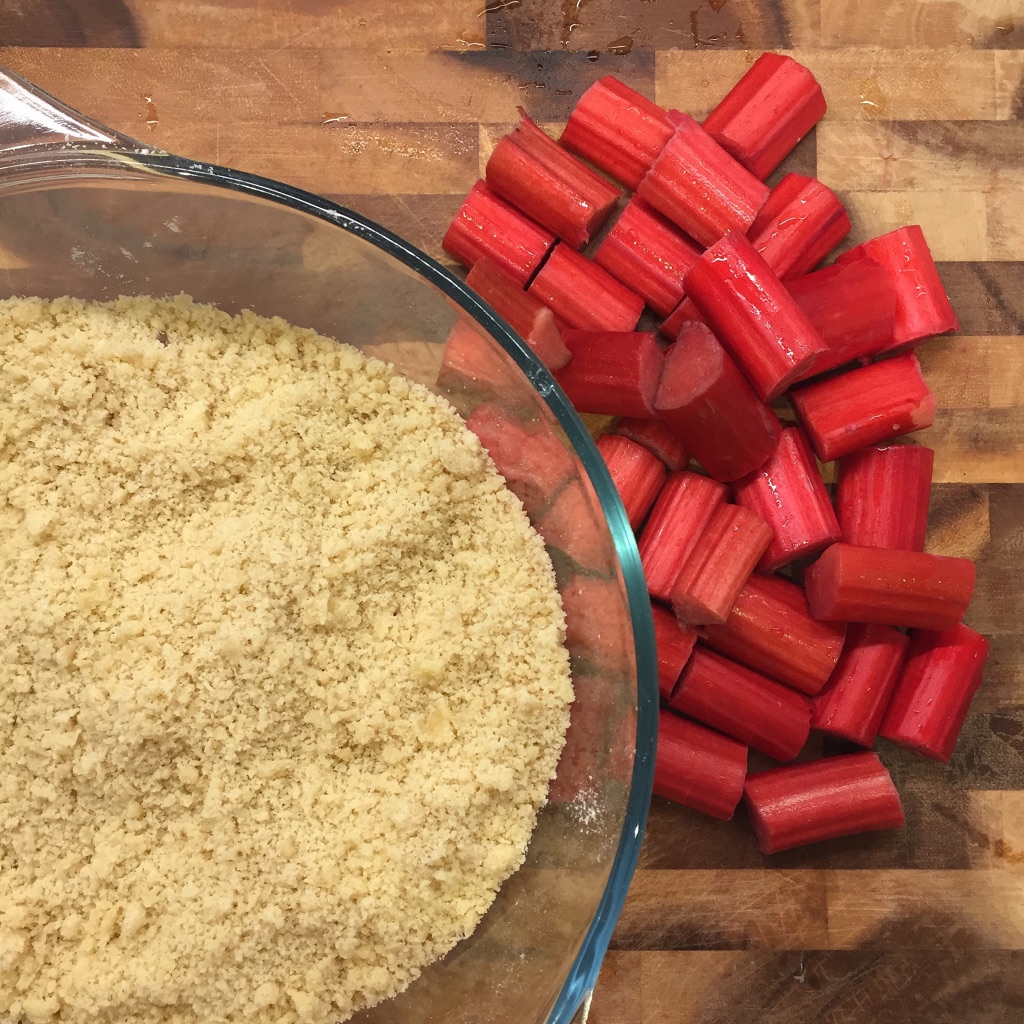
Another reason to fall in love with rhubarb is because it is so so easy to cook with. First point is to note that the leaves are poisonous enough to give you a dodgy tummy, so cut those off and compost but the whole stem is edible. Don’t worry about the stem being green, they’re supposed to be, it’s not the same as potatoes, green or pink bits of stem on rhubarb are perfectly edible.
Use rhubarb for tarts, crumble, stewed and roasted. All as easy as the other! Generally you cut it into 3 – 4 cm chunks like so:
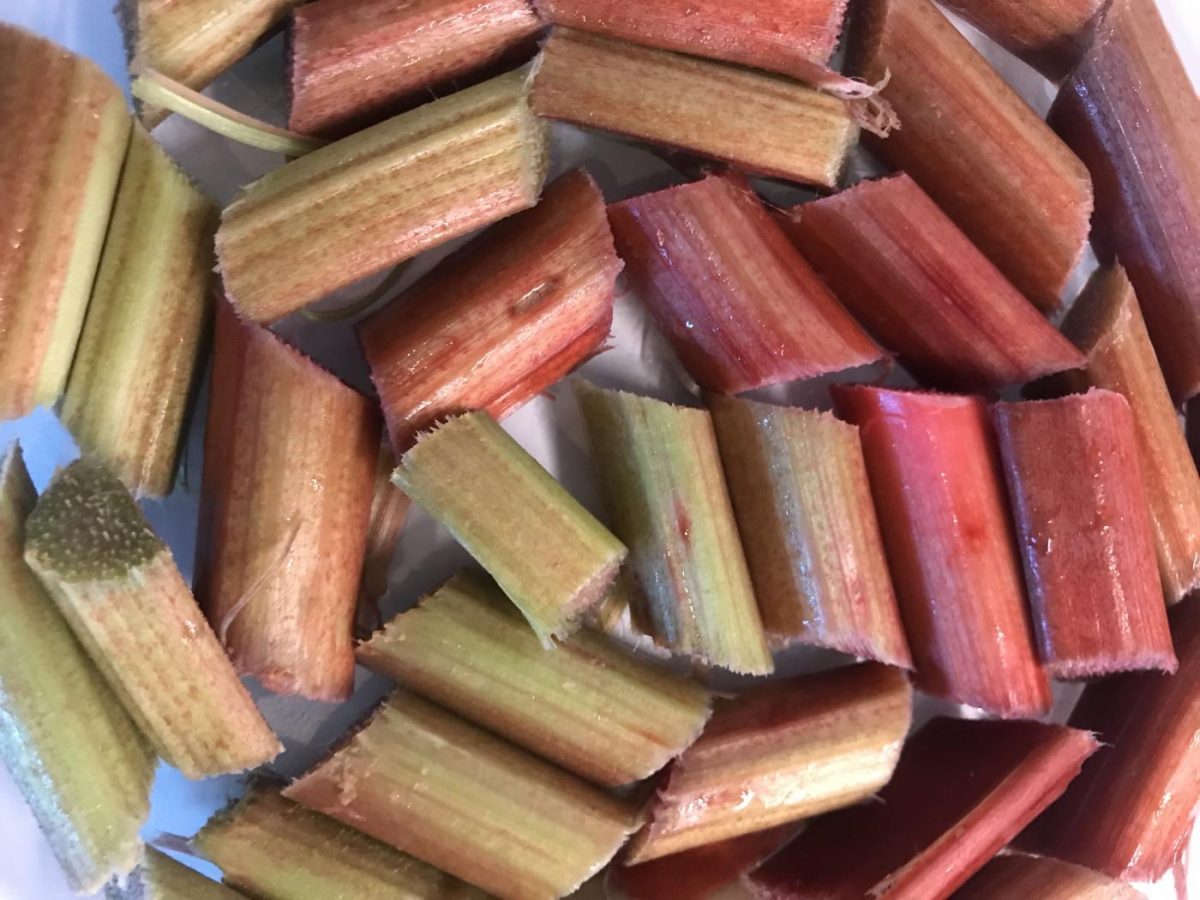
Roasted rhubarb / rhubarb compote recipe
To roast it, place in a layer in an oven dish, add a teaspoon or two of water and a good sprinkling of caster sugar. Roast it for 30 – 40 minutes at 180C in a fan oven until soft and bubbling but still maintaining its shape. This is perfect as an accompaniment to yoghurt and icecream.
Rhubarb crumble recipe
For crumble, you’re basically following the same process and then adding the crumbly bit half way. You’ll need:
- 500 – 800g of rhubarb sticks to fill the base of a roasting tray to about two sticks thick.
- 75g caster sugar.
- 100g of Demerara sugar.
- 100g of chopped butter.
- 200g of plain or self-raising flour.
Chop up the rhubarb into 3cm chunks, add into a baking tray and sprinkle on the caster sugar.
Then, mix the demerara sugar, flour and chopped butter with your hands, rubbing it into a mix. Messy but quick. Then cover the rhubarb and cook for 30 – 40 minutes until the crumble is golden and bubbly.
To the rhubarb you can add some sweet Sicily herb to sweeten with less sugar, and to the crumble you can add some porridge oats for extra crunch and texture.
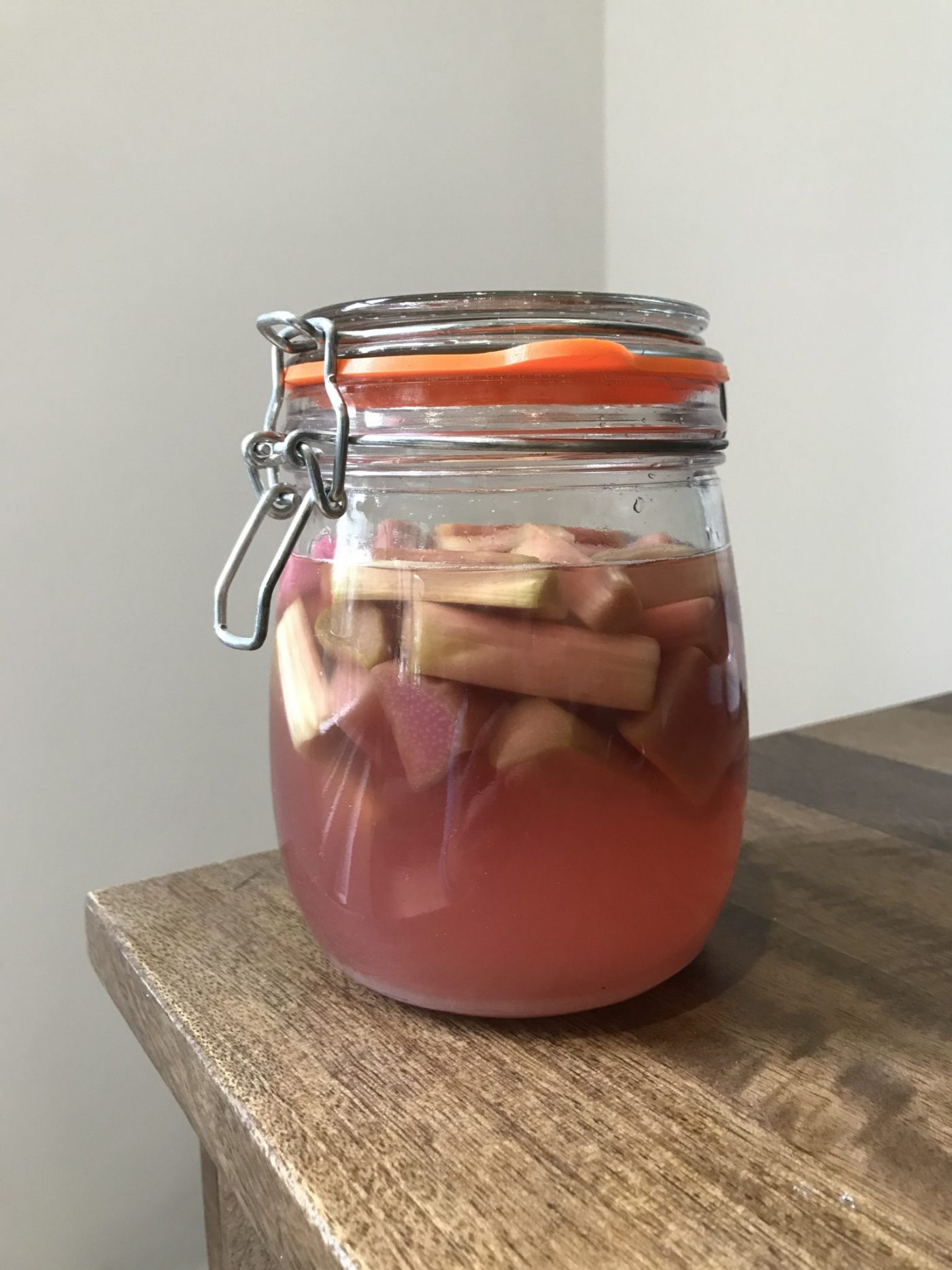
Rhubarb infused gin recipe
Fill a kilner or well sealed and sterilised jar about two thirds of the way up with 3cm chunks of rhubarb, plus a few table spoonfuls of caster sugar. Then fill up with any good gin, seal and shake. Store in a dark cupboard for 1 – 3 weeks, shaking daily. Taste each week to check the flavour, then drain out the rhubarb and the infused gin will last a long time. The redder the rhubarb sticks, the pinker the gin.
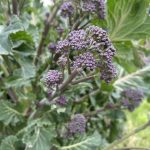

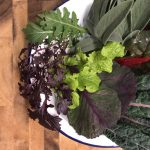
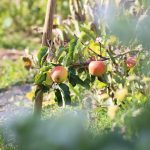
This is packed with useful information and answers to questions I had. Thanks!
That’s brilliant, thanks for the feedback Keith, makes it worth writing!
I have a rhubarb plant in my garden. I didn’t plant it so not sure how old it is. It produces a good crop every year. Do you advice splitting the crown and replanting? I enjoyed reading the article. Thank you
Hi Jan! You don’t need to but you certainly can, yes 🙂
Jack